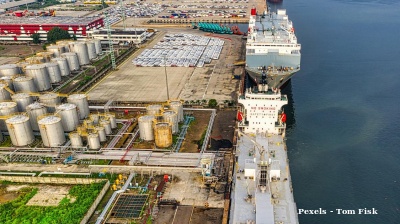When Beijing’s leaders rattle their sabres and talk about the 'historical inevitability' of being reunited with the self-governing and still independent nation of Taiwan, they ignore a crucial factor so often overlooked: Taiwan has never been entirely conquered, and if anything, has made a habit of humiliating would-be invaders over the centuries.
For this reason, while the People’s Republic may stockpile missiles, launch frigates by the dozen on a daily basis to circumnavigate Taiwan, and parade cyber warriors on state television, it will never dominate a land that has never been subdued – an island defined by resistance.
An increasing number of academics across the world assume Taiwan would collapse after the first barrage. But this is to misunderstand the ground itself. This is soil soaked – and hardened by - centuries of struggle.
From Dutch muskets as early as 1624, to Spanish cannon soon thereafter, from Japanese colonial warriors in the late-19th Century and modern Chinese threats as recently as the mid-20th Century, outsiders have repeatedly tried and failed to break Taiwan.
Much of this, particularly in the early days before the concept of nationhood existed came in the form of aboriginal resistance. Warriors belonging to a number of groups across the main island of Taiwan didn’t simply fight; they carved defiance into the very culture of the island. And that spirit didn’t disappear when Taipei became the tech capital known for its dominance of the global semiconductor markets of today. It’s still there – and it will be the undoing of any Chinese leader and his military officials who think the conquest of Taiwan is merely a game of logistics.
Beating the Dutch
When the Dutch East India Company planted its flag on Taiwan in the early 1600s they were under the belief that a few so-called “savage villages” would soon fall in line. At the time, the tiny European state was punching above its weight in Asia and elsewhere, making a name for itself as a global maritime power. But Taiwan’s tribes, especially those deep in the forests and mountains, refused to bow.
For decades the indigenous population harried Dutch patrols and ambushed remote settlements. Areas outside fortified Dutch settlements around what is today the city of Tainan became killing fields. Settlers who strayed too far were often found minus their heads. When the Dutch finally abandoned Taiwan in the 1660s, a half-Japanese Ming loyalist named Zheng Chenggong (Koxinga in the West) arrived and claimed control over a small portion of Taiwan but never even came close to ruling the whole island.
Squashing the Spanish
Spain’s efforts at conquering the island overlapped with those of the Dutch but in the end were no less humiliating. Another naval superpower, albeit one on the wane, the Spanish built forts at Keelung on the northeast coast and Tamsui on the northwest which were supposed to secure the northern portion of the island. Instead, despite their best efforts at interaction with the local population to secure food and building materials, the Spanish found themselves besieged, sabotaged, and eventually chased off by relentless aboriginal opposition.
Within twenty years a Spanish presence on what later became known as Taiwan evaporated and in 1642, they scuttled off back to their regional HQ in Manila, colonial ambitions on the island in tatters.
The message was clear: Taiwan was no easy prize, regardless of your prowess on the open ocean.
Japan’s bloody lesson
Just over 200 years later came Japan. In 1874, newly emboldened by its own modernisation, Tokyo sent thousands of troops to punish the indigenous Paiwan people in southeast Taiwan after a shipwreck incident. Crack Japanese troops landed and expected swift retribution, but the Paiwan failed to play ball.
Malaria, heat and poisoned water decimated the Japanese ranks. Paiwan ambushes turned expeditions into massacres and within weeks, the once-proud expedition was heading back to its ships, mission unaccomplished.
Twenty years later, even after Tokyo formally annexed Taiwan in 1895, the highland tribes never fully accepted Japanese rule. “Pacification” campaigns dragged on for decades, costing hundreds of Japanese lives and eating up budgets set aside for development of what Tokyo deemed a colonial experiment.
Indigenous fighters, sometimes with captured rifles but often still with traditional weapons, refused to surrender. The Japanese built roads and fortresses deep into the mountains, but control was never fully accomplished. Taiwan was never a society that simply rolled over when an empire landed. If anything, thanks in part to early Japan-era figures such as Chiang Wei-shui, a doctor turned activist determined to give the residents of the island their own identity and voice, the national spirit of Taiwan was only increasing in size, strength and influence.
Beijing’s delusion
Fast forward almost a century and as the first quarter of the 21st century ends, Chinese President Xi Jinping’s China is the latest to talk tough about conquering Taiwan – or, as Communist Party officials prefer to call it - “reunification”.
Yes, the People’s Liberation Army boasts the world’s largest standing army, a missile arsenal in the tens if not hundreds of thousands, and a rapidly expanding naval force.
But brute force will count for little in the almost impenetrable mountains of north and central Taiwan if the population refuses to be governed. Occupation in any corner of the world is not about landing troops - it’s about holding ground and about breaking wills. Ask the Russians how they fared against the Afghans to see how another superpower was ultimately sent home, tail between its legs by a people they saw as inferior. Taiwan’s history shows any future would-be ruler will bleed in perpetuity.
The island today is not made up of a people armed with bamboo spears. It is a modern democracy with one of the most advanced defence industries on the planet. Its population is highly educated, globally connected, and acutely aware of its separate identity from China.
The memories of aboriginal defiance stand alongside recollections of martial law and the White Terror imposed by arrivals from the mainland in the 1940s. Taiwanese know what it means to fight for survival – and they do it well.
Beijing’s generals' dream of a Hong Kong style suffocation replayed on a larger scale. What they forget is that Taiwan is not Hong Kong.
Even if China somehow succeeded militarily, what then? An insurgency of historic proportions; one that would potentially make what happened to Russia in Afghanistan look like a walk in the park. Every street, every village, every mountain path could run red with Chinese blood. Internationally, the optics would be devastating for China.
Footage of Taiwanese resistance, interwoven with indigenous imagery of past struggles against the Dutch, Spanish and Japanese, would galvanise support across the democratic world – including from Holland, Spain, and especially Japan. Taiwan’s allies would not need to fight for Taiwan; the island itself would bleed China dry.
This is an island where every invader has left humbled. The bones of history and thousands of invaders stretching back centuries are piled high on Taiwan, coated in the arrogance of those who thought this island could be tamed.
Xi Jinping needs to think again before he sends so many young Chinese men and women to their deaths on Taiwan, for if the PLA does one day dare to land, they too will be buried here.
Opinion

COMMENT: Ukraine’s coming financial storm
“A crisis is drawing ever closer. It will break in Ukraine, but it won’t begin on the frontlines, where the country’s battle-weary brigades continue to impose a brutal cost on the Russian invader," writes Timothy Ash of BlueBay Asset Management.

BEYOND THE BOSPORUS: Performance postponed. Hotly anticipated “CHP” trial pushed into October
Every Turk up and down the country has an opinion on what Erdogan is up to.

COMMENT: Europe’s summer of humiliation
This summer started with optimism around trade deals and progress in Ukraine, but quickly unravelled. Trade uncertainty is back, the war drags on with rising casualties, and Europe is now grappling with a raft of political crises.

INTERVIEW: The rags-to-riches rise of Freedom Holding Corp's Timur Turlov
As he rang the Nasdaq exchange bell to start trading in his company’s shares, the childhood dream of this Wall Street movie fan from a poor Moscow suburb had come true.
.jpeg)



